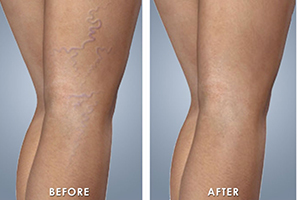
Varicose veins are gnarled, enlarged veins. Any vein may become varicose, but the veins most commonly affected are those in your legs and feet. That's because standing and walking upright increases the pressure in the veins of your lower body.
For many people, varicose veins and spider veins — common, mild variations of varicose veins — are simply a cosmetic concern. For other people, varicose veins can cause aching pain and discomfort. Sometimes varicose veins lead to more-serious problems.
Varicose veins may also signal a higher risk of other circulatory problems. Treatment may involve self-care measures or procedures by your doctor to close or remove veins.
Symptoms
Varicose veins may not cause any pain. Signs you may have with varicose veins include:
• Veins that are dark purple or blue in color
• Veins that appear twisted and bulging; often like cords on your legs
Risk factors
These factors increase your risk of developing varicose veins:
Age
Family History
Obesity
Standing or sitting for long periods of time.




